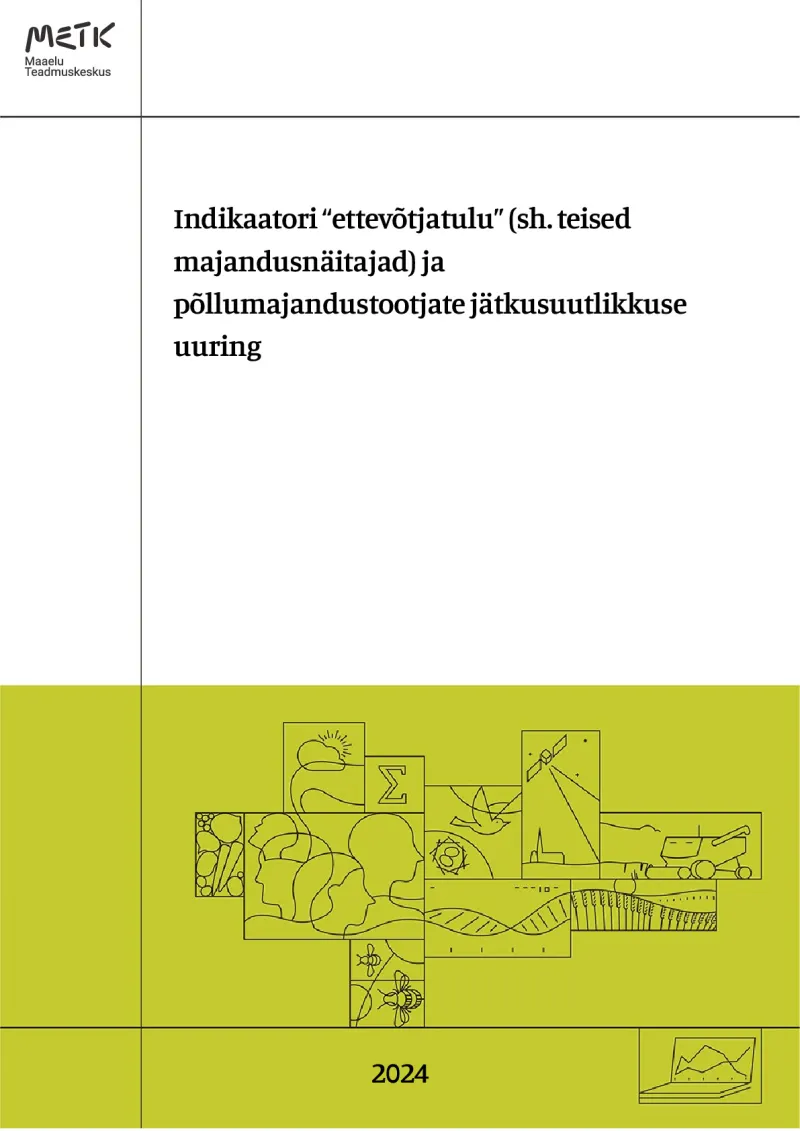Study of the indicator 'entrepreneurial income' and the sustainable economic viability of agricultural producers
- Evaluation
- Jobs, Growth and Equality in Rural Areas
- Agricultural Productivity
- Evaluation
- Socio-economic Impacts
The indicator 'entrepreneurial income' measures the extent to which environment-related subsidies from the Rural Development Programme (RDP) have impacted the income level of the rural population.
- Estonia
- 2014-2022
- Socio-economic impacts

The primary objective of analysing the 'entrepreneurial income' indicator and other economic indicators was to determine the extent to which the Estonian 2014-2020 RDP environment-related supports, in total and individually for each measure, have impacted the income level of farmers who have applied for these environment-related measures. The extent of the impact of the measure support on the economic viability of agricultural producers was also analysed by assessing the proportion of sustainable producers from the total number of companies that received the corresponding support. Farmers’ economic viability has been assessed separately for each environmental measure, for the total number of farmers who applied for environmental payments, and also for the average number of farmers who did not apply for environmental payments, as well as for the agricultural sector (producers in the FADN population of farmers) in 2022.
The study is based on FADN data for 2022. The primary objects of analysis for the entrepreneurial income indicator are net added value, entrepreneurial income and calculated net profit, all of which are averaged per producer. Taking into account that agricultural producers have both a structure of production and differ significantly in terms of economic size, the aforementioned indicators have been analysed and expressed in terms of the company per annual unit of employed labour and per hectare of agricultural land used.
The indicator entrepreneurial income and other economic indicators are calculated as weighted averages. In the FADN sample, the generalisation of the results from companies that have received environmental subsidies, as per the 2014-2020 RDP data from the Paying Agency support register, has been applied to the general population of farmers. Data were weighted separately by each 2014-2020 RDP environmental support, using agricultural register (ARIB) and information board data from the animal and field register and standard production coefficients (calculated on the basis of average indicators for the years 2015-2019 coefficients of standard output). For each producer in the ARIB animal and/or field register, production type and economic size were determined according to the FADN typology.
A key indicator for evaluating economic performance is the company's income, which reflects its profitability and sustainability. The business income per hectare of agricultural land in 2022 for farmers who applied for RDP environmental support (beneficiaries) was 339 euros and 430 euros for conventional farmers (non-beneficiaries).
Among non-beneficiaries, 48% of producers were considered economically viable, whereas among beneficiaries of agri-environmental and climate support (M10 - all measures), the share of viable producers was 71% (compared to 67% in 2021).
In 2022, the support for the measure had a greater impact on the economic viability of producers in the agri-environment-climate sub-measures, specifically breeding endangered breeds (15%), maintaining semi-natural habitats (14%) and support for organic farming (10%). In 2022, as in previous years, the share of economically viable producers was the highest among large producers (86-100%). The impact of support for the measure among large producers remained modest.
The higher the net value added, the more resources the company has available for paying wages, making investments and generating income.
Author(s)
Maaelu Teadmuskeskus (Maris Kruuse; Analysis: Eduard Matveev; Technical support: Marek Kärner)